FOLLOW THE DRIP AND SEE WHERE IT DROPS AND WE WILL FIND THE ROOT OF THE HEALTH EPIDEMIC
For a better tomorrow let’s address the issue with the American Way… Health Care in America?
Start off by Googling: The Cost Of Health Care Spending 2023
The information provided by the Peter G Peterson Foundation is a nonpartisan organization dedicated to addressing Americas long term fiscal challenges to ensure a better economic future.
States that the United States spends nearly two times the average of similarly wealth countries with no better outcomes than those countries and in some cases worse in areas such as life expectancy, infant mortality, and diabetes.
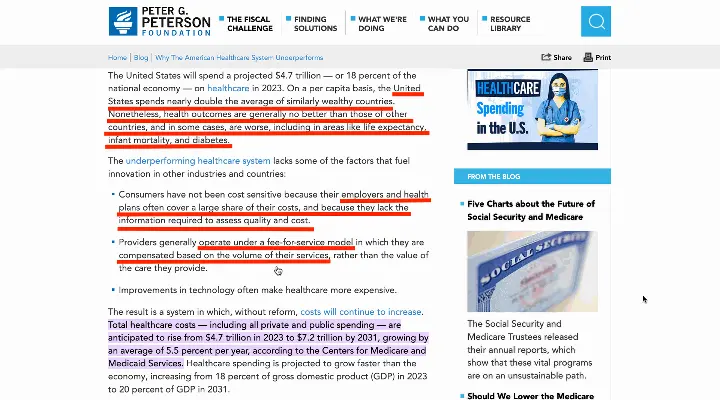
One of the underlying factors is that consumers have no sensitivity to their cost because their employers and health plans often cover a large share of their cost so they are unaware of the informations required to assess quality and cost. (Which also creates a gap between small businesses and big companies that can afford to offer health care to employees which draws away from the pool of resources that can help the economic growth of small businesses.)
Another reason is that the providers generally operate under a fee for service model which means they are compensated based on the volume of patients they see versus their services or value of care.
Overall the total cost of health care including all private and public spending are anticipated to rise from $4.7 trillion in 2023 to $7.2 trillion by 2031 according to the Centers for Medicare and Medicaid Services that’s an average of 5.5% per year.
Just below the highlighted area it states that the projected spending of health care will grow faster than the economy from 18% in 2023 to 20% in 2031.

Here you can see the drastic growth in spending by state/local and the difference in federal funds used to assist since 1970-2019
HEALTHCARE COST GRAPH CHART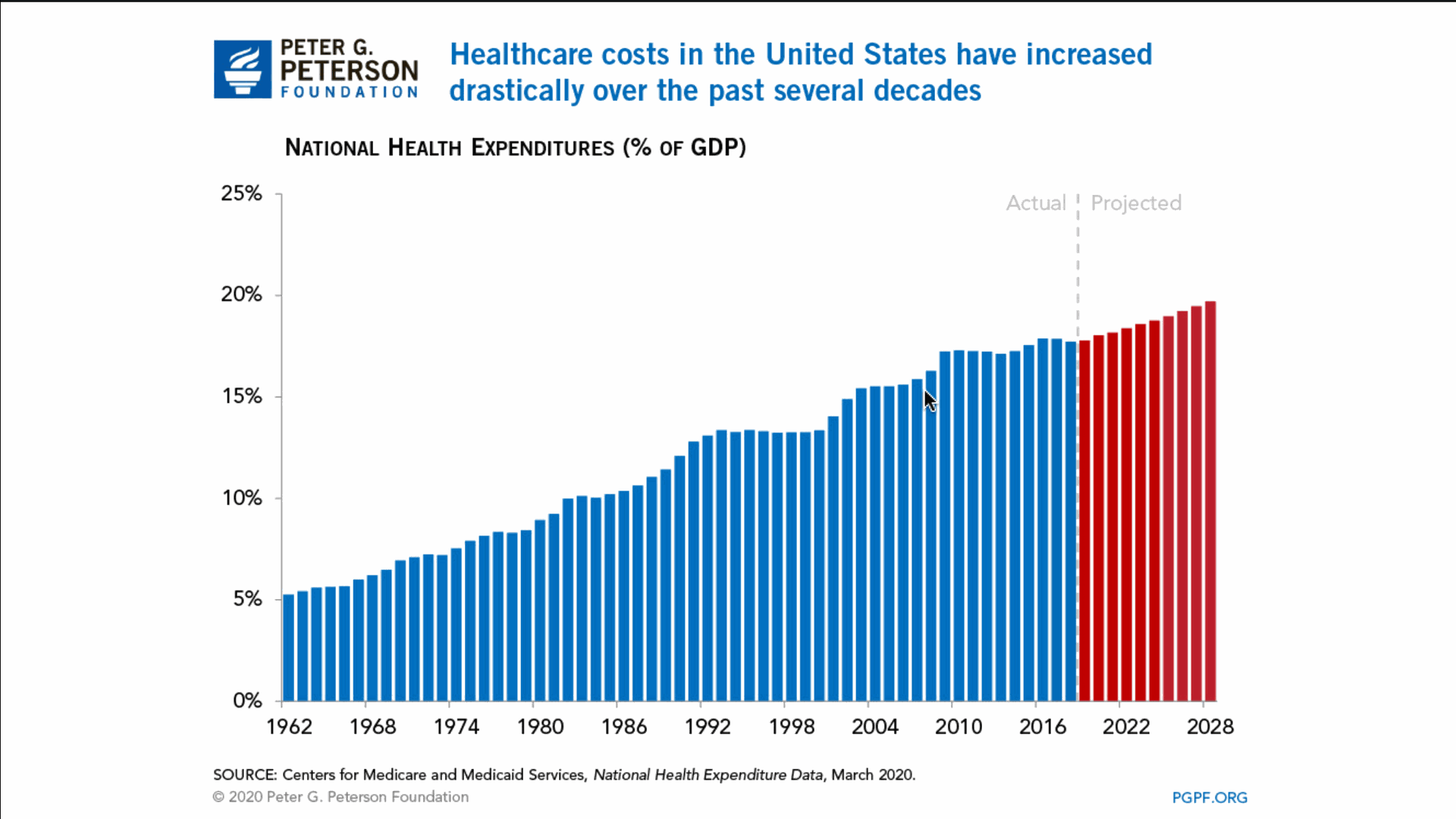
The Healthcare costs in the United States have increased drastically over the past several decades and since the early 1960’s is where you will begin to notice the paradigm shift on an a micro and macro scale which will lead us to the current symptoms of today and the root cause of disease.
Google’s your friend so Google this Relationship between doctors and pharmaceutical companies
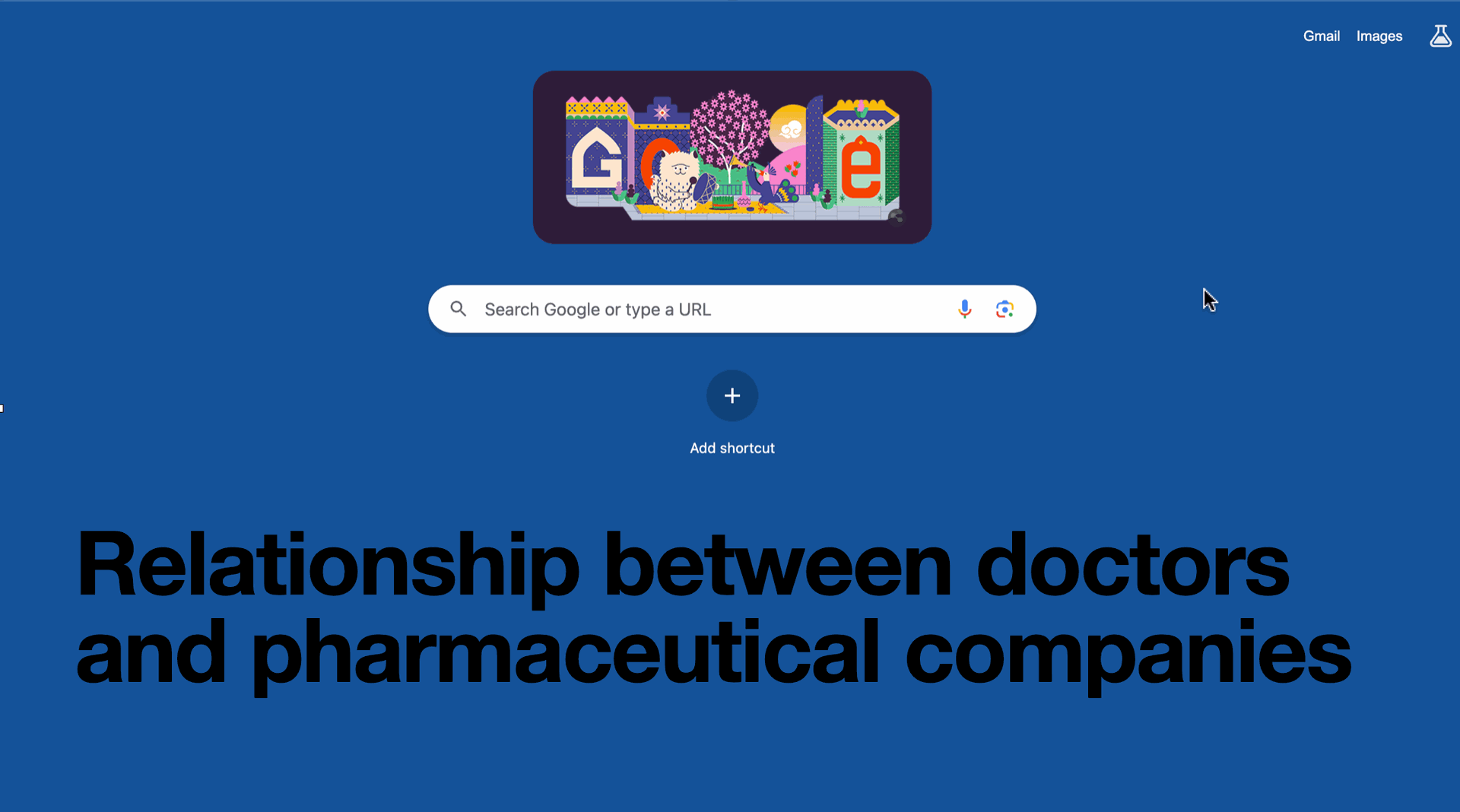
A public health review article published January 11, 2023 by Frontiers in Public Health who are the 3rd most citied source with over 687 Million articles downloaded last year 2023. Discusses the relationship of doctors and pharmaceutical companies influence on the public and the medical health care system. The payments from pharmaceutical companies to physicians are most common and can very much influence the behavior of the prescribing physicians.
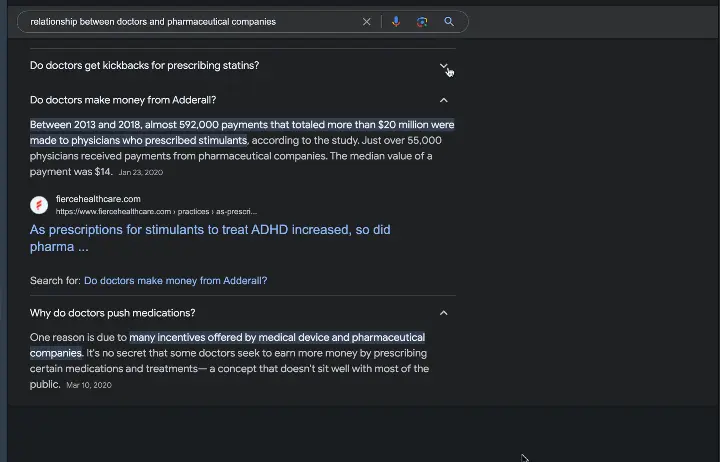
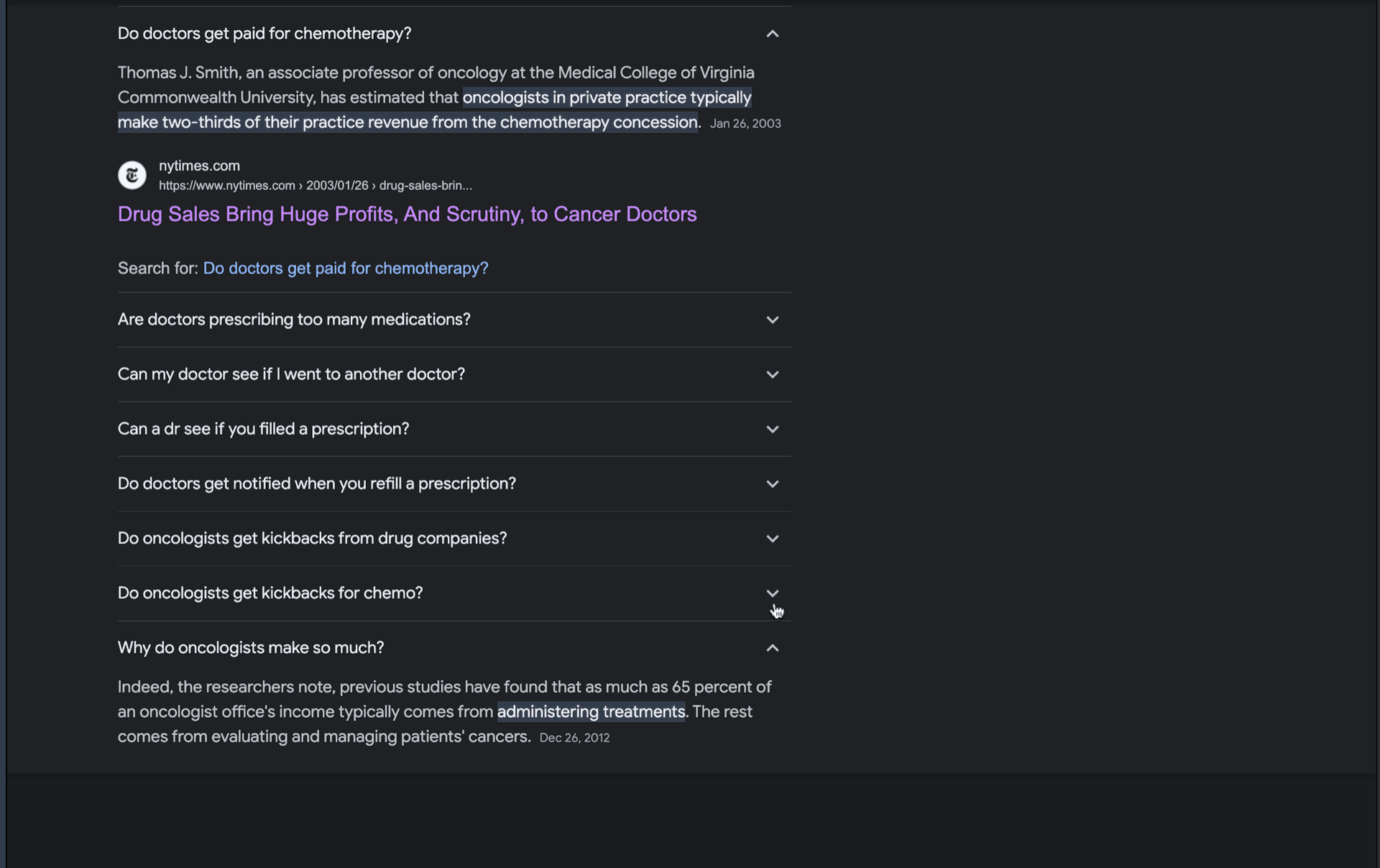
Although compensation is illegal it does happen in more ways than one in the form of cash for consulting services, lectures, or travel accommodations etc. and there’s also non cash forms such as meals, gifts, stocks and licenses. About 90% of pharmaceutical cost are allocated to physicians and other prescribers. The industry payments to physicians and teaching hospitals in the United States excluding the amount for scientific research funding amounted to 3.6 billion in 2019… And this is Before COVID data. Almost half of the physicians receive annual payments from this industry.
According to the finding of a systematic review low - and middle income countries are most common in showing a financial relationship with physicians and the pharmaceutical industries.
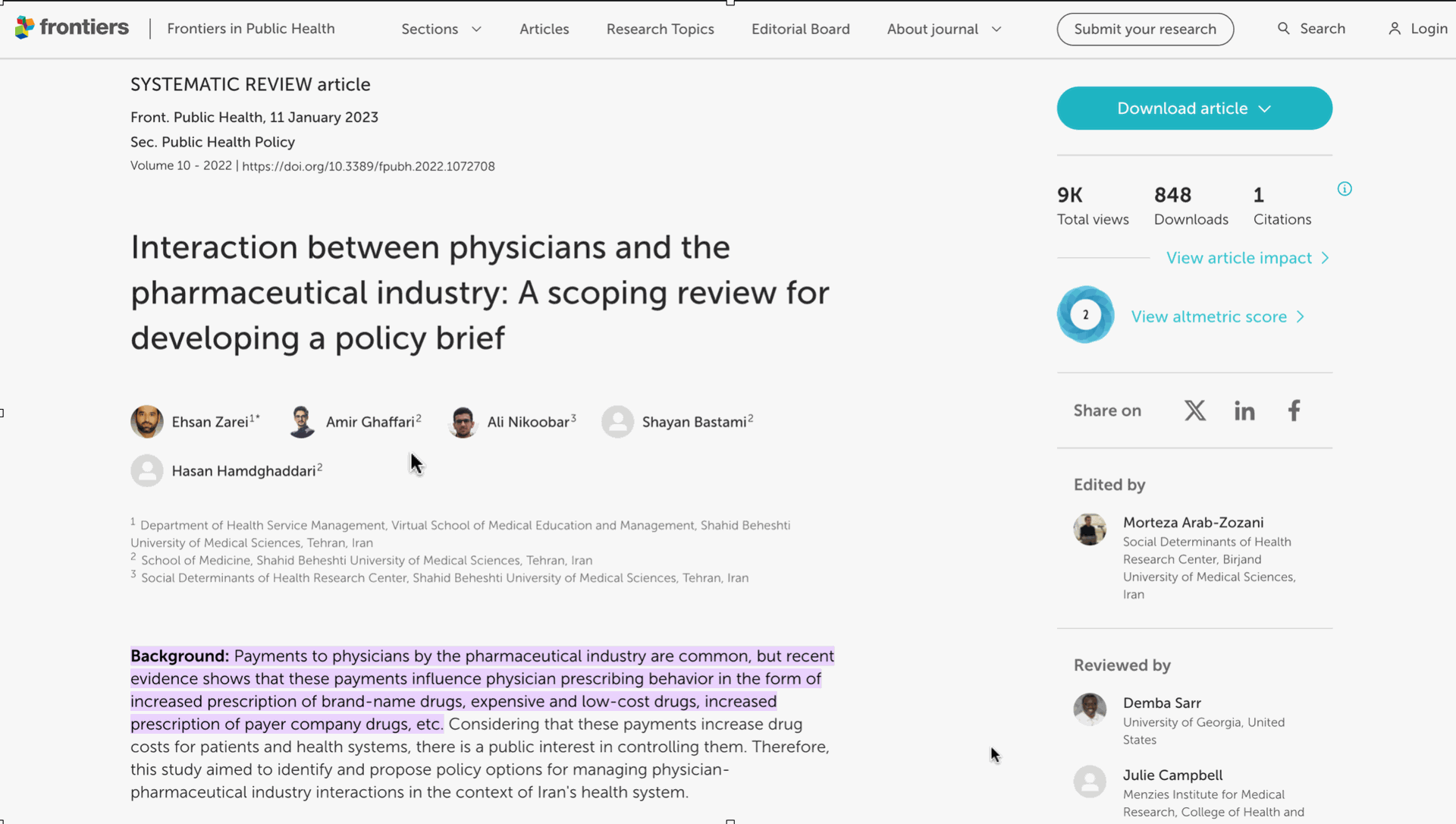
United States showed a 10% increase in pharmaceutical industries payments to physicians is associated with 1.3% increase in medical cost and a 1.8% increase in drug costs. The argument for the physicians is that pharmaceutical companies need physicians to test products to use in clinical trials. Its also stated that humanity owes a great deal to the cooperation of the pharmaceutical companies and physicians for life saving drugs and surgical devices.


So while it’s not openly discussed or visibly seen by patients nor the public there’s a cost associated with going to the doctors that may be unseen. Which is why I as well as many other health, wellness and holistic practices advocate for the individual to take control of your health.
HOW PHARMACEUTICAL COMPANIES PRICE THEIR DRUGS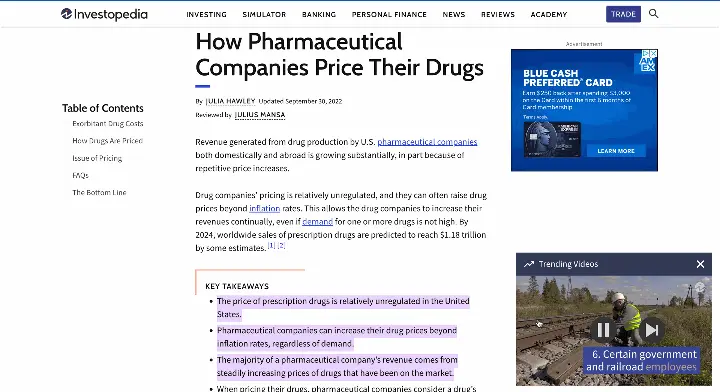
Because the price of pharmaceutical drugs remains unregulated it leaves huge profit margins for drug makers to price gauge the uninformed public. Which in tern allows pharmaceutical companies to increase their drug prices beyond inflation rates regardless of demand. The pharmaceutical companies also can hold a patient for over a decade without any competition.
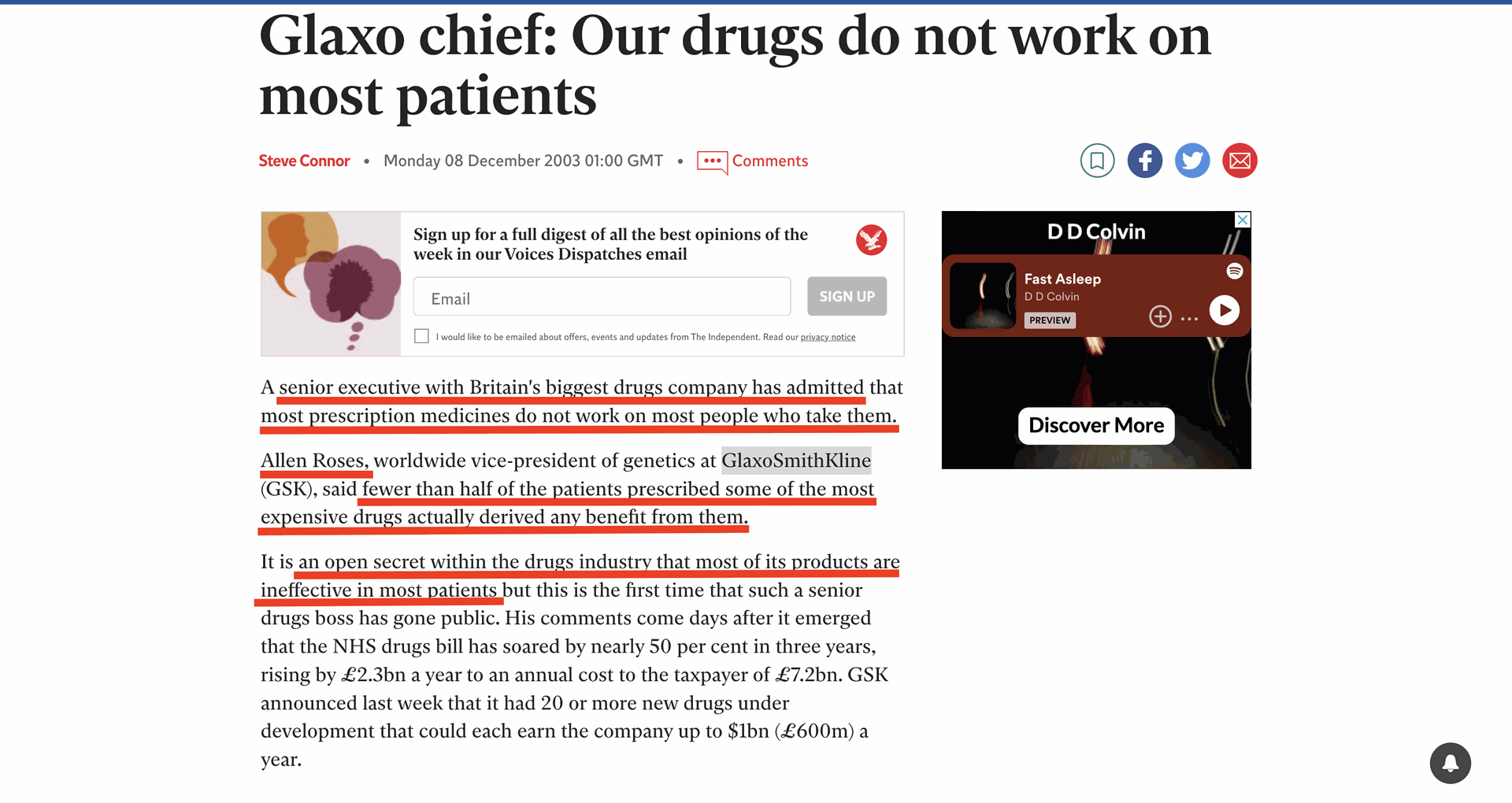
A Senior executive of Britain’s biggest drug company flat out admitted that most perception medicines do not work on most people who take them. Dr. Allen Roses world wide vice president of GlaxoSmithKline said that fewer than half of the patients prescribed some of the most expensive drugs actually derive any benefits from them.
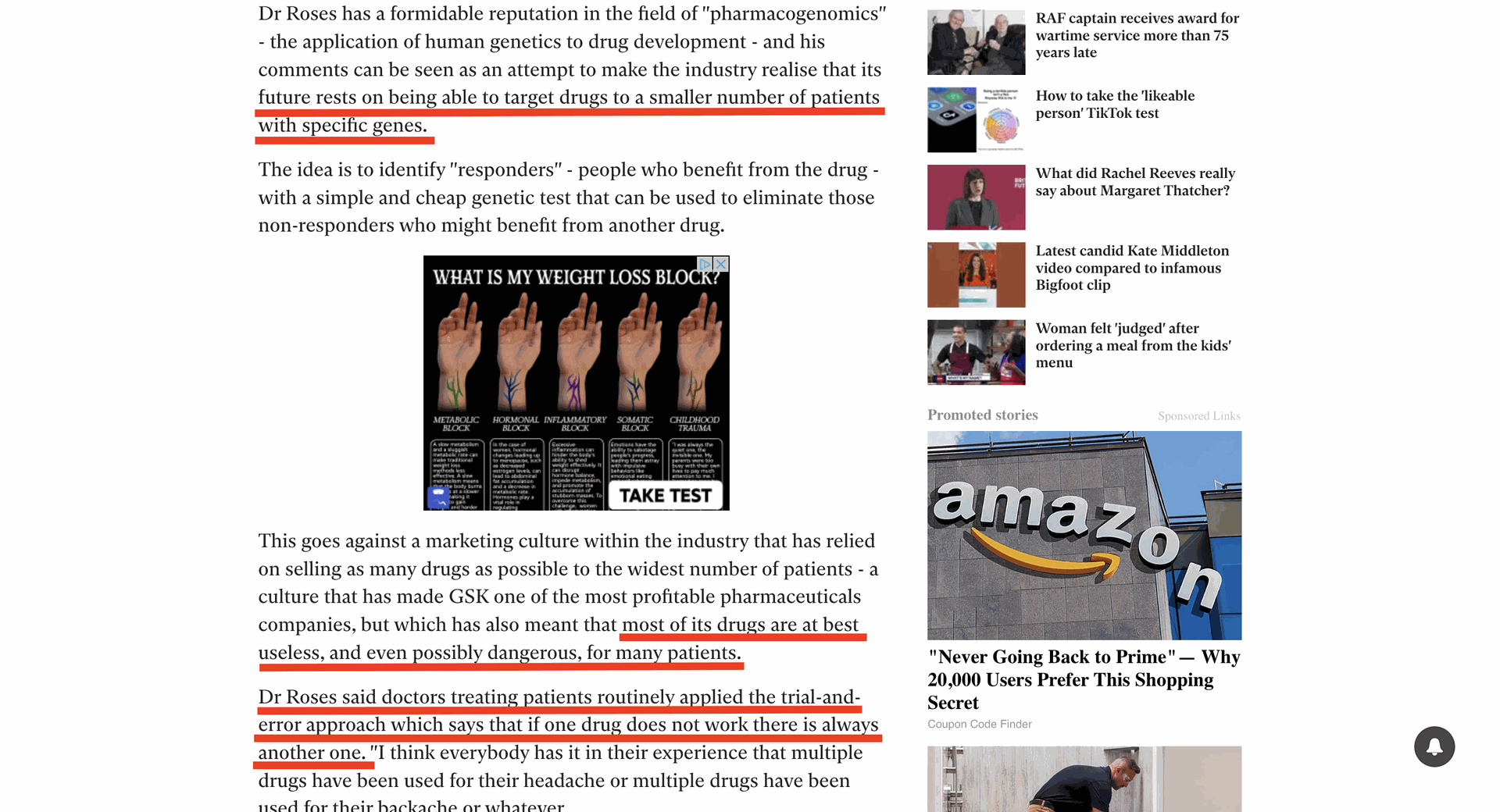
Dr. Roses says that often doctors use the trial and error approach which says that if one drug does not work there is always another one or even a combination of them.
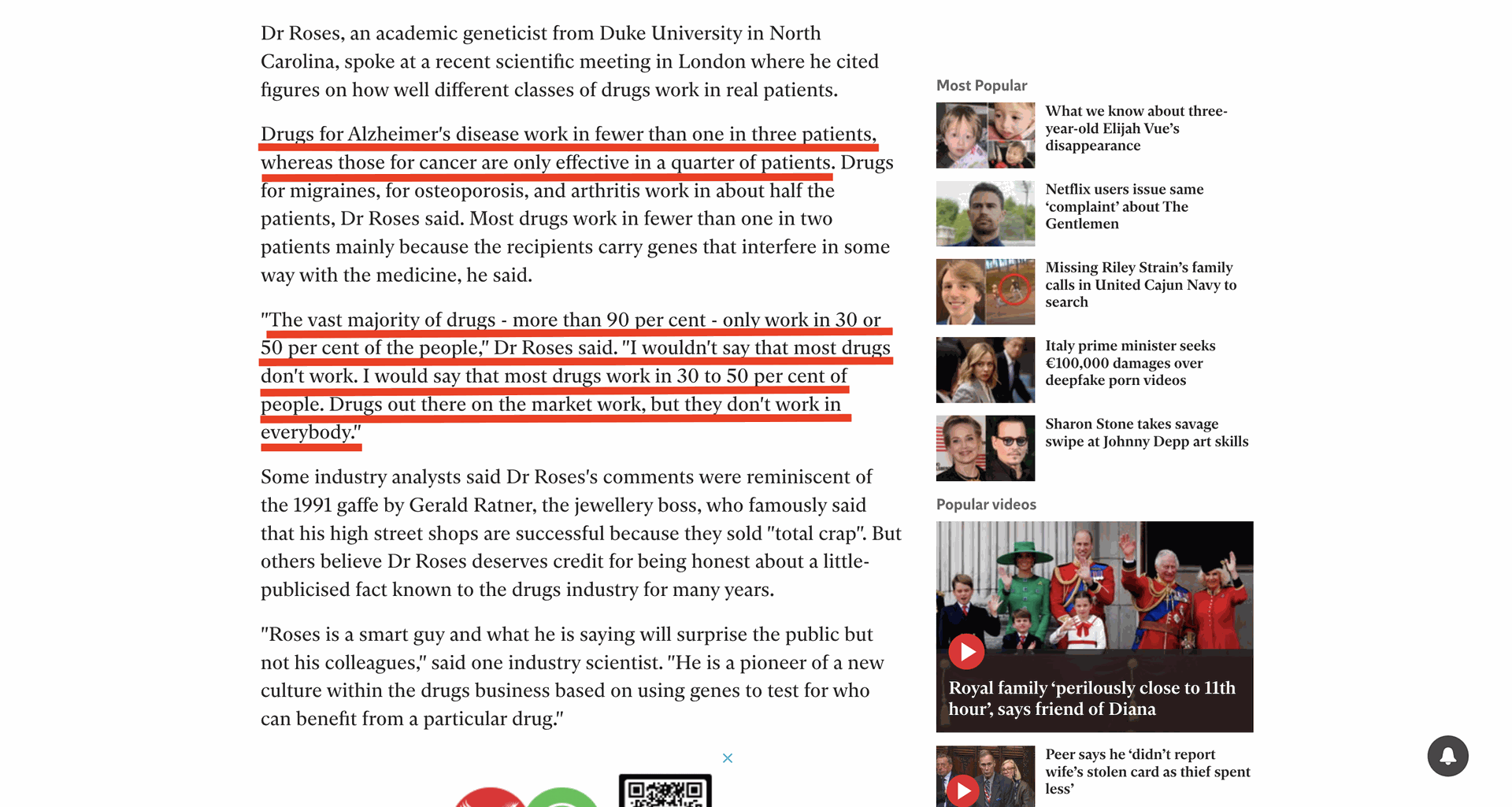
Drugs for Alzheimer’s disease work in fewer than 1 in 3 patients whereas those with cancer are only effective in a quarter of patients. And the drugs for migraines and osteoporosis works in half of the patients. Dr. Roses also follows up and says that the main reason most drugs don’t work is because the recipient carries genes that interferes with the medicine in some way.
The vast majority of drugs - more than 90% only work in 30% or 50% of people. Dr. Roses was also quoted for saying that “I wouldn’t say that most drugs don’t work. I would say that most drugs only work in 30 - 50% of patients.

Now if you’re interested in doing some of your own research check out Death By Medicine written by Gary Null PHD and a few other medical doctors listed on the cover.
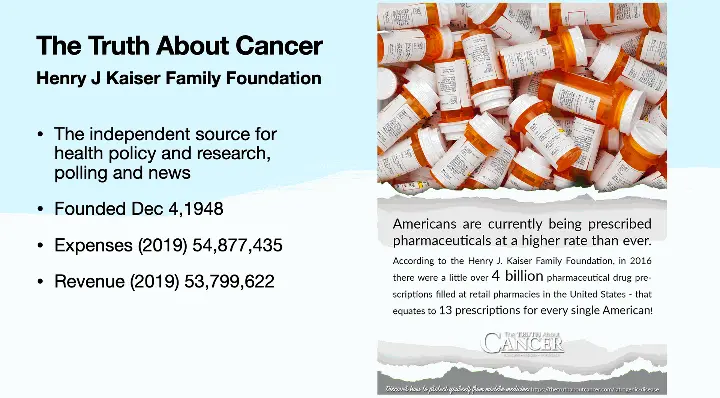
Americans are currently being prescribed pharmaceuticals at a higher rate than ever. According to the research done by the Henry J Kaiser Family Foundation who is an independent source for health policy and research, polling and news since 1948. Says in 2016 there were a little over 4 billion drug prescriptions filled at retail pharmacies in the United States.
GOOGLE: how many pharmaceutical drug prescriptions filled at retail pharmacies in the US.
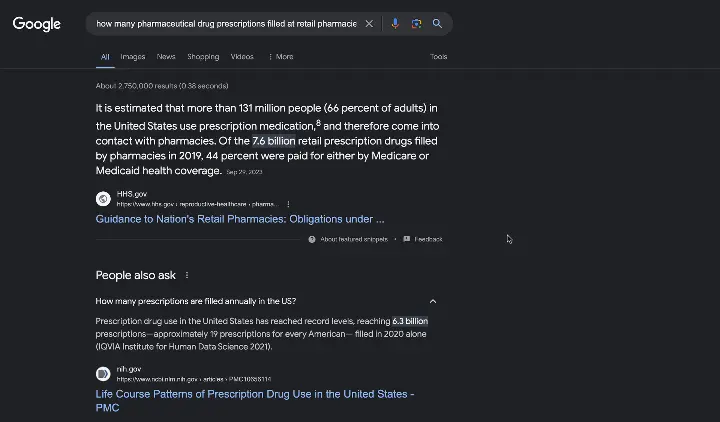
According to the US Department of Health and Human Services more than 131 million people which equates to 66% of adults in the US use prescription medication. And of that 7.6 billion retail prescription drugs filled by pharmacies in 2019, 44% was paid by Medicare or Medicaid health coverage.Which further more leads to the fact that Americans are numb to the pain of the economic financial burden this health care insurance system has been burdening the people and stifling the growth of our future generations.
Within a few short years it went from 13 prescriptions for every single American in 2016 to approximately 19 prescription for every American filled in 2020 alone.
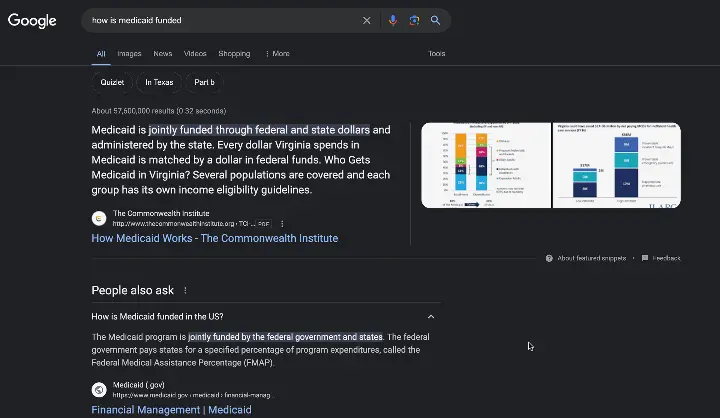
So where does Medicare money come from?
Majority of the funding comes from general revenues and payroll taxes which accumulates up to 80% of the $888 Billion in 2021 which means its more profitable for the United States to keep Americans sick depending on the current health care insurance taxation system than it would be to encourage a proper diets and exercise.
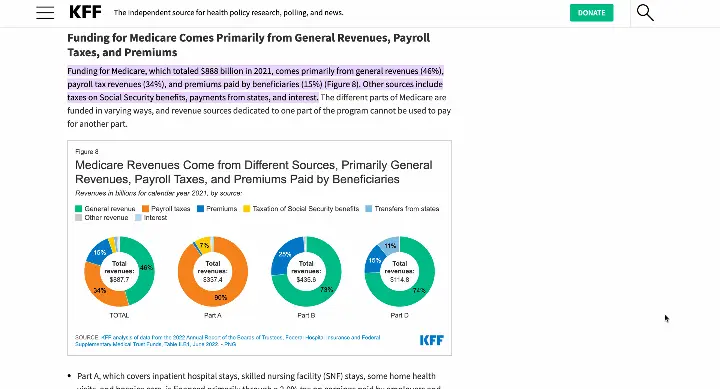
IATROGENIC DISEASE
Iatrogenic comes from the Greek language “iatros” which means doctor or healer and “genic” which means as a result. As a result of the doctor. Together means “as a result of the doctor”
Comes in the form of pharmaceutical drugs, hospital infections, batched surgeries etc.
LEADING CAUSES OF DEATH
According to the CDC the top 4 leading cause of death is accidents (unintentional injuries) which can vary from user or operator error to physician assistance error.
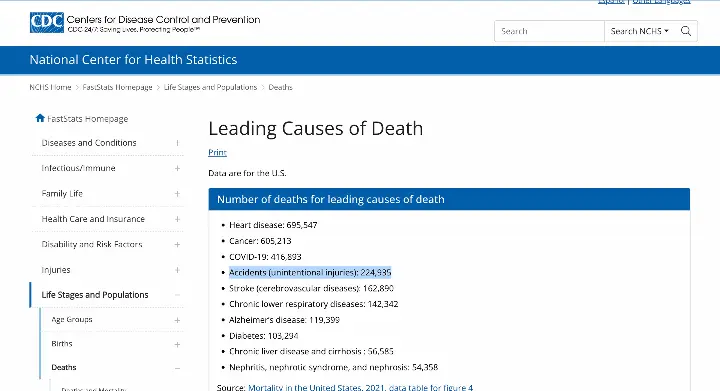
There’s no specification as it remains here on this list just under most recent COVID-19, Cancer and Heart disease.
JOHN HOPKINS
Don’t take my word and research let’s use John Hopkins as a creditable source that reports Study Suggest Medical Errors Now Third Leading Cause of Death in the U.S. Now I must state that the release date of this information was May 2016.
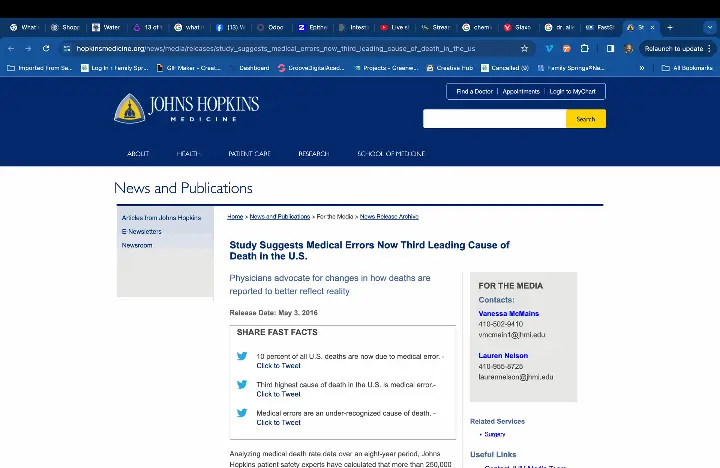
Over the last 8 year period Johns Hopkins patient safety experts analyzed the medical death rate data calculating it to more than 250,000 deaths per year that are due to medical errors in the US.
The team at Johns Hopkins says that the CDC ’s way of collecting national health statistics fails to classify medical errors separately on the death certificate.
Martin Makary M.D. MPH who’s a professor at Johns Hopkins University school of medicine and an authority on health reform states that “Incidence rates for deaths directly attribute to medical care gone awry haven’t been recognized in any standardized method for collecting national statistics. And the medical coding system was designed to maximize billing for physicians services not to collect national health statistics
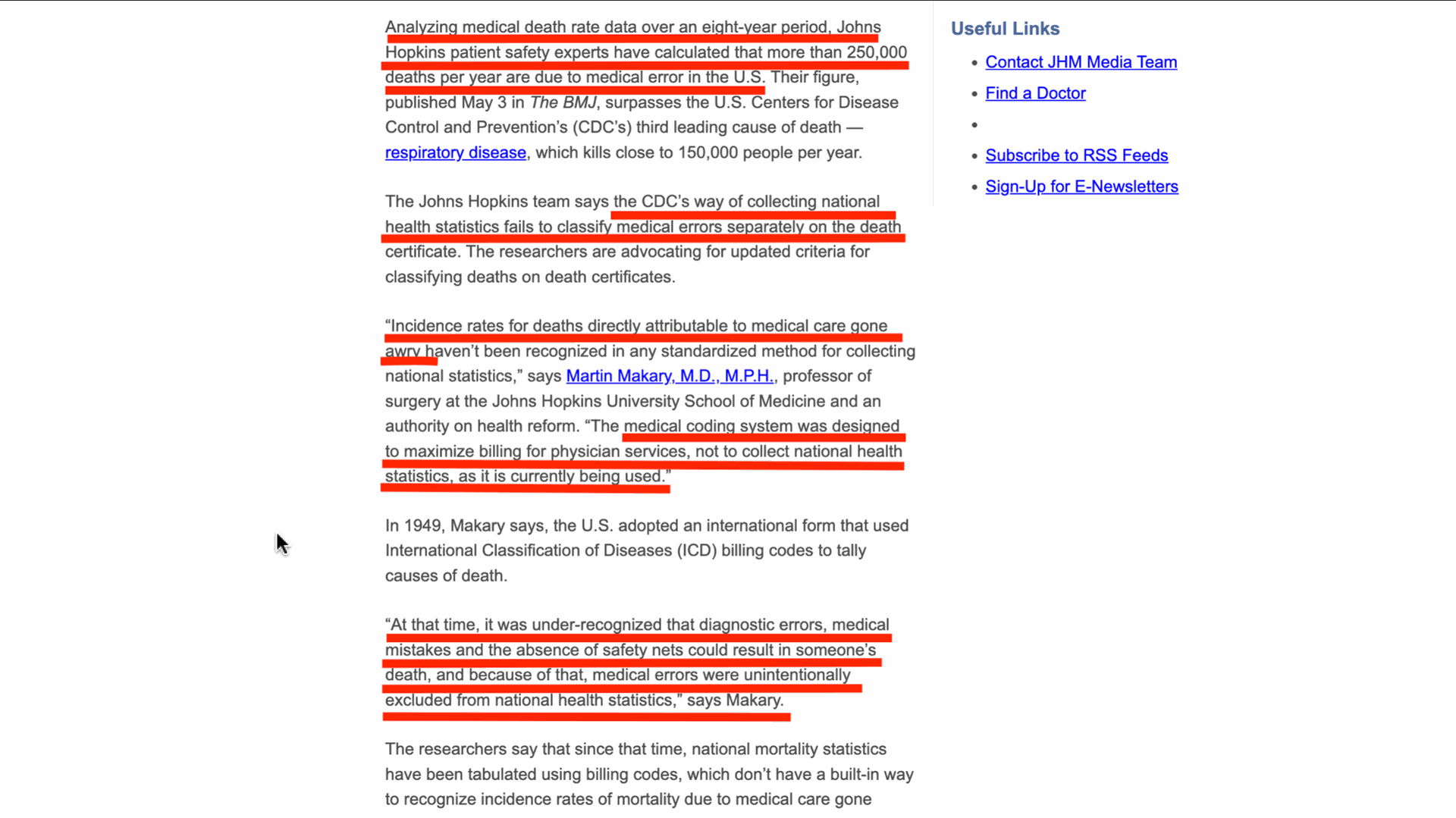
During their study the researchers examined four separate studies that analyzed medical death rate data from 2000 to 2008, including one by the US Department of Health and Human Services, Office of the Inspector General, and the Agency for Healthcare Research and Quality.
By using the hospital admission rates from 2013 they extrapolated that based on the total 35,416,020 hospitalizations 251,454 deaths stemmed from a medical error equals to 9.5% of all deaths each year in the US.
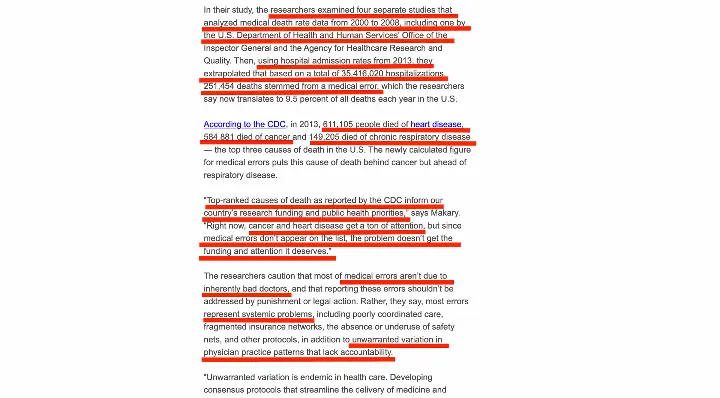
Listen closely to this point made by Dr. Makary “Top-Ranked causes of death as reported by the CDC informs our country’s research funding and public health priorities. And right now we can all see what diseases are getting the most attention and marketing cancer and heart disease. But since medical errors don’t appear on the list of problems it does not get the proper funding and attention it rightfully deserves.
Lastly with all the important facts and information stated it does not go without saying that the medical errors are not due to inherently bad doctors but represent a systemic problem with poorly coordinated care, fragmented insurance networks, the absence or under use of safety nets and other protocols in addition to unwarranted variations in physician practice patterns that lacks accountability.